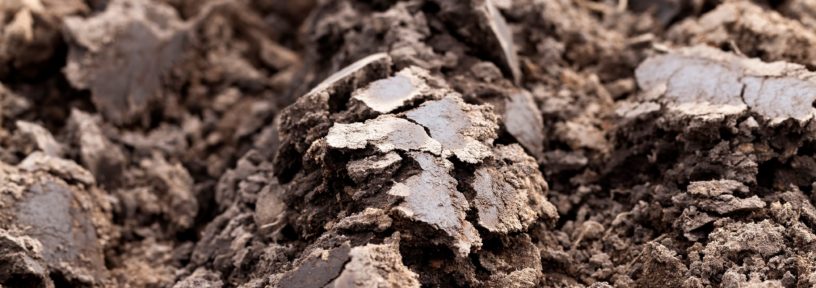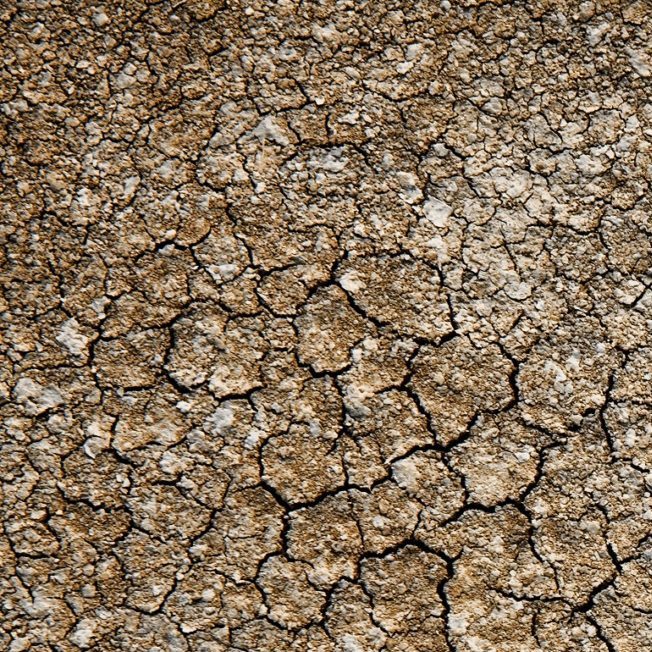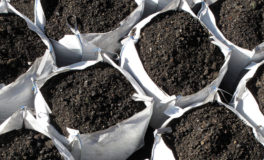Clay soil is a unique addition to the garden if you do find yourself with a batch. Though it has a reputation for being difficult to work with, the reality is that there are benefits to be had with the right fertiliser and a little bit of care.
In this guide to clay soil, we will show you the pros and cons of having clay soil, as well as the best way to turn it into an asset for your garden.
How Do You Recognise Clay Soil?
The best way to identify clay soil is to get stuck in and handle it. You can roll the clay into a sausage between your hands,or squeeze it into a ribbon without it falling apart. If it feels quite smooth when rubbed between the fingertips and sticky when wet, you have clay soil.
What Is the Best Fertiliser For Clay Soil?
At TurfOnline, we recommend Miracle-Gro EverGreen enriched lawn soil as the best fertiliser for clay soil. Although it is topsoil, its mixture of mostly organic material will help to improve the drainage, and structure of clay soils, as well as adding beneficial nutrients like nitrogen.
What are the Advantages of Clay Soil?
Not only is clay soil good at retaining water in your garden to keep plants well-watered for longer, but the structure of this soil also means it retains nutrients well, making it naturally fertile.
Since overworking clay soils often leads to compaction, they are often in their best condition when left alone. Clay will naturally aerate itself as it swells and shrinks when it becomes wet and dry respectively. This is good news for those who have a laissez-faire approach to gardening!
What are the Disadvantages of Clay Soil?
Clay soil can be very heavy and difficult to work with, especially when wet. Moreover, because this soil often suffers from poor drainage this is frequently the case.
Clay soil can also be compacted easily, so you should avoid walking on it whenever possible. This is especially true just after rain, as compaction occurs more readily when the soil is damp.
In spring, clay soil can take longer to warm up compared to other soil types like sandy soil. When it eventually does warm up, it can bake and become very hard during hot, dry periods. But there are ways of improving clay soil for your garden.
How Do You Improve Clay Soil For Gardening?
There is one helpful solution to drastically improve clay soil for gardening. Raised beds provide a number of benefits; for one, the soil can’t be compacted by being walked over. Two, the drainage is improved, and the soil warms up faster after winter so it doesn’t overreact and bake come the summertime. Raised beds are an all-around perfect solution to handle clay soil.
How Do You Break Up Clay Soil?
Adding composted bark, sand or new topsoil will break up clay and make the soil far easier to work with. The clay will also be less prone to compaction, and drainage will be improved. It’s worth noting that bark can draw nitrogen from the soil, so you may need to add additional fertiliser after taking this step.
Which Plants Like Clay Soil?
Although clay soil is naturally fertile, the poor drainage qualities mean that any plants which don’t like their feet wet, like those advertised as drought-tolerant, are best avoided.
According to the RHS, tree fruits and roses can grow very well in clay soil, as well as shrubs and other ‘woody’ plants.
Try planting Asters, Rudbeckia, Golden Rod, Yarrow, Sea Holly, Hostas, Yucca, Miscanthus, Mock Orange, Magnolia or Dogwood for bee-friendly plants that do well in clay soils.
Topdressing your lawn at least once a year will help to keep the soil in optimum condition.


 Guide to soil for landscaping
Guide to soil for landscaping  Wildflowers For Clay Soils
Wildflowers For Clay Soils  Are You Working With Loam Soil?
Are You Working With Loam Soil? 

